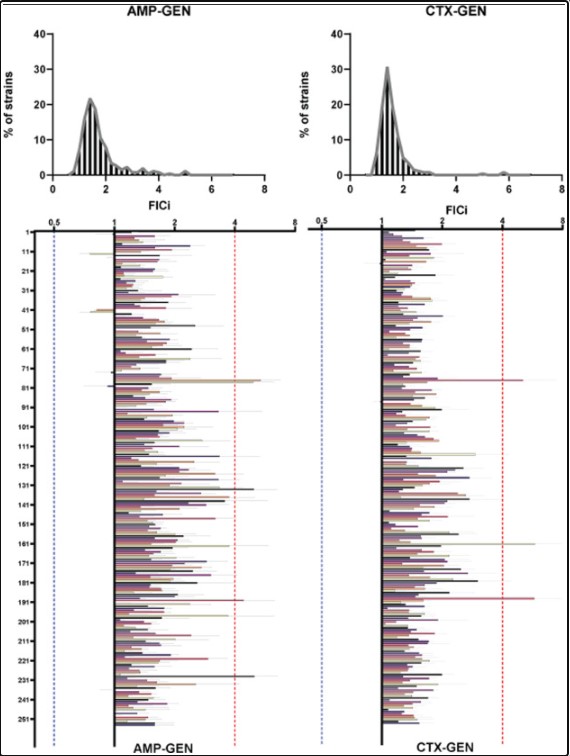Full study on Lancet eBioMedicine
Treatment of Blood Stream Infections (BSIs) with a combination of a β-lactam and an aminoglycoside antibiotic is widely used in intensive care units (ICUs) around the world. However, no studies have systematically examined how these drugs interact and potentially influence the antimicrobial efficacy of the overall treatment. We collected 500 E. coli isolates from the Uppsala University hospital that were isolated from blood of patients with suspicion of infection. Of those we tested the efficacy of combinations of 2 common β-lactam antibiotics (Ampicillin and Cefotaxime) combined with 2 common aminoglycosides (Gentamicin and Tobramycin) on 254 isolates. The efficacy of all 4 pairwise combinations in inhibiting bacterial growth was then examined on all susceptible strains. That was done by quantifying the Fractional Inhibitory index (FICi), a robust metric for antibiotic combinatorial behaviour, of all possible treatments on every strain. When non additive interactions were identified, results of the original screen were verified with time kill assays. Finally, combination behaviours were analysed for potential cross correlations.
Findings
Out of the 4 antibiotic combinations screened none exhibited synergistic effects on any of the 254 strains. On the contrary all 4 exhibited important antagonistic effects on several isolates. Specifically, the combinations of AMP-GEN and CTX-GEN were antagonistic in 1.97% and 1.18% of strains respectively. Similarly, the combinations of AMP-TOB were antagonistic on 0.78% of all strains. PCA analysis revealed that an important factor on the responses to the combination treatments was the choice of a specific aminoglycoside over another. Subsequent cross correlation analysis revealed that the interaction profiles of combinations including the same aminoglycoside are significantly correlated (Spearman’s cross correlation test p<0.001).
Interpretation
The findings of this study elucidate potential risks of the common combination treatment for blood stream infections. They also demonstrate, previously unquantified metrics on how antibiotics in combination therapies are not interchangeable with others of the same class. Finally, they reiterate the need for case-by-case testing of antibiotic interactions in a clinical setting.


